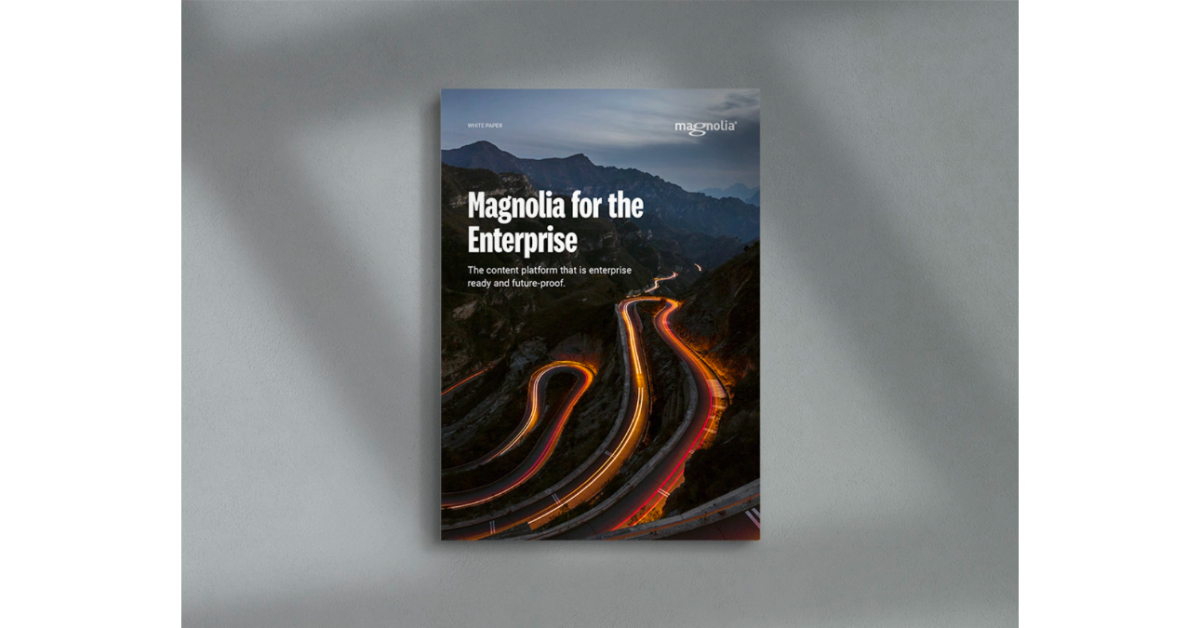- Feb 7, 2023
- --
Ketchup or Composability?
While we wait for the 2023 Gartner® Magic Quadrant™ for Digital Experience Platforms: Magnolia reflects on its position in the market
Experience Magnolia in action
Experience Magnolia's key features firsthand in an interactive product tour.
Take a tour nowWhile we all wait for the 2023 Gartner Magic Quadrant for Digital Experience Platforms, recognizing various vendors across the globe, I felt this would be a great time to reflect on Magnolia’s position in the market. Gartner publishes their quadrant for DXP around this time (here’s last year’s report if you’re interested), but we never know when exactly.
It means that all evaluated software companies are rolling up their sleeves right now, refreshing their buzzword libraries, scrambling PR teams, and working very hard to prepare content and campaigns.
Then… KETCHUP. All of it comes out at the same time. That ketchup-effect reminds you of when a Suite vendor sends an invoice. Here’s 15 applications of which you will most likely use 3.
Here’s what the Gartner Magic Quadrant looked like last time around:
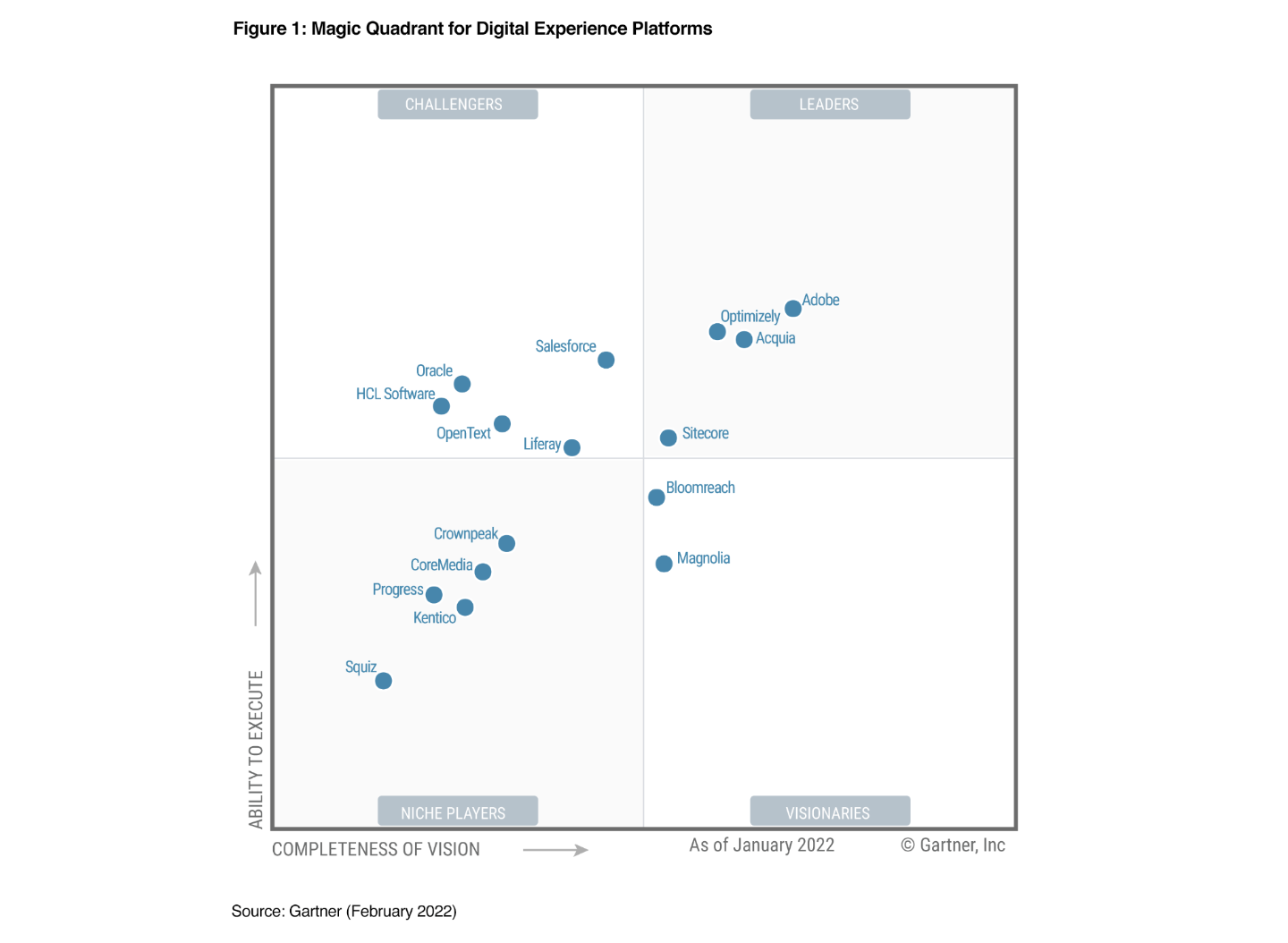
The Calm Before the Storm
Both strategically and in execution, Magnolia has gone ALL IN on what’s nowadays known as “composability” for a ridiculously long time. It dates back to 2014 and even before for us. I have the YouTube links to prove it if you don’t believe me.
So the fact that composability is going through peak hype and buzz hysteria is a bit fun to watch—from within a software maker that’s been all about that for a very long time. Do we believe less in composability just because the word itself is now being overused? No. It’s incredibly important to Magnolia. I think it’s fair to say that we’re just moving to its next natural level.
A sneak peek of beliefs
No matter what Gartner writes this year, we’re pretty firm in what we believe in.
Here’s a bit of a sneak peek into how our thinking is evolving when it comes to Digital Experience Platforms and composability.
3 Beliefs:
Composability must be paired with usability
All the tech in the world won’t matter if you don’t communicate content well
Enterprises debunk the myth of all-or-nothing headless approach
Let’s tackle them one by one!
1—Composability must be paired with usability
We believe that composability must be paired with usability. It's not enough to just have a bunch of different technologies that can be pieced together - they also need to be easy to use and understand. That's why we've been embracing composability even before the current headless trend.
Composability is the ability to easily integrate and use different technologies together. It's the opposite of the traditional monolithic approach, where all features are bundled together in one big package. Composability has always been one of Magnolia’s premier strengths.
But. It’s evolving now!
Anyone can “compose” a platform of multiple products from multiple vendors. That’s not so damn hard.
What we deem necessary is to couple composability with strong usability.
Only once you put together a unified UI for the business practitioner, allowing them to tap into all the connected pieces of software, are you realizing a truly Composable DXP:
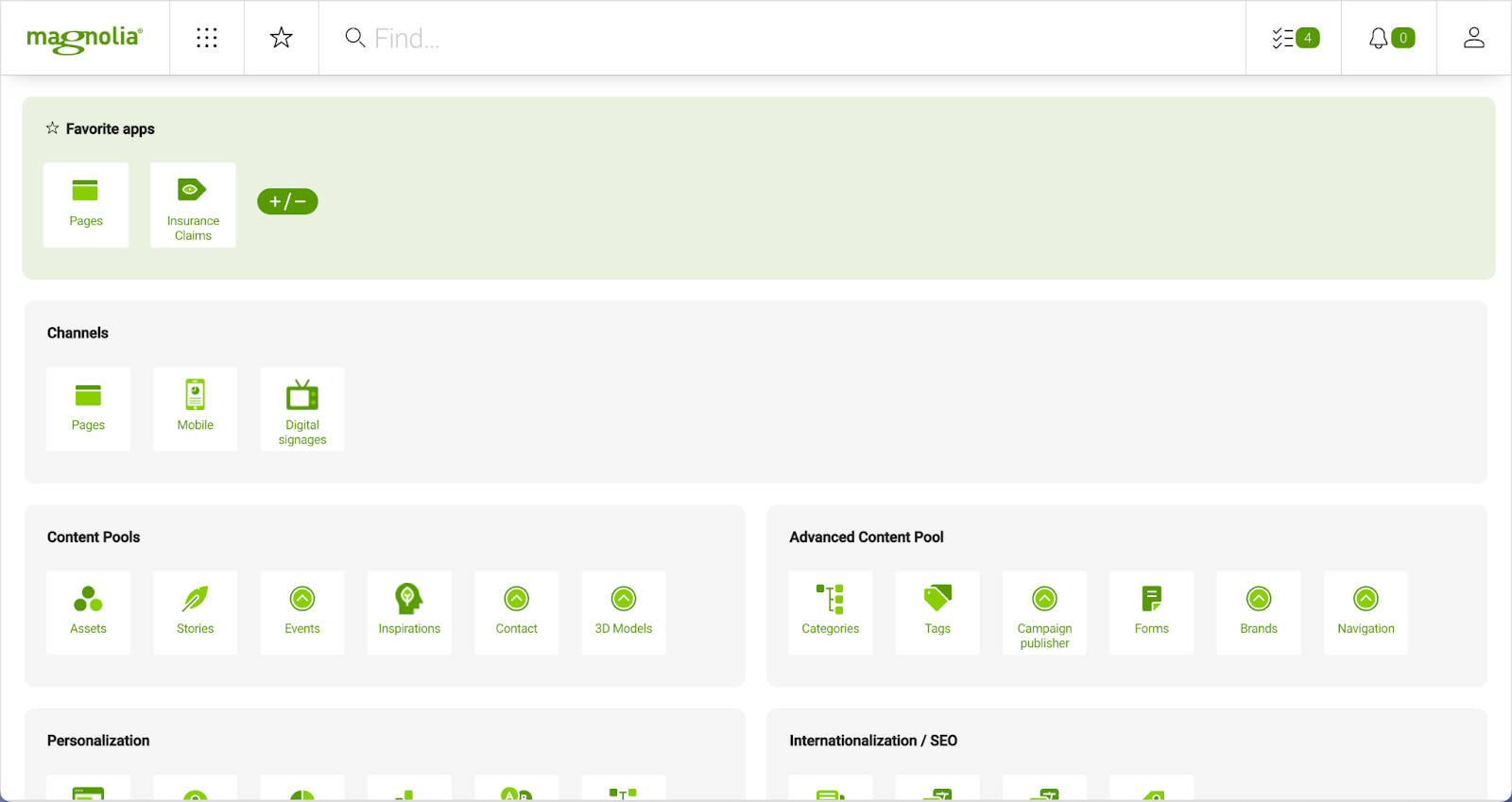
2—All the tech in the world won’t matter if you don’t communicate content well
Platform composability isn't the only important aspect of a great DXP. Storytelling starts with composable content. All the tech in the world won't matter if the focus is lost on “creating meaningful, engaging experiences for users”. That's why we think content—and all the intuitive editing and workflow features that make creating and using content easy—must remain at the heart of a good DXP.
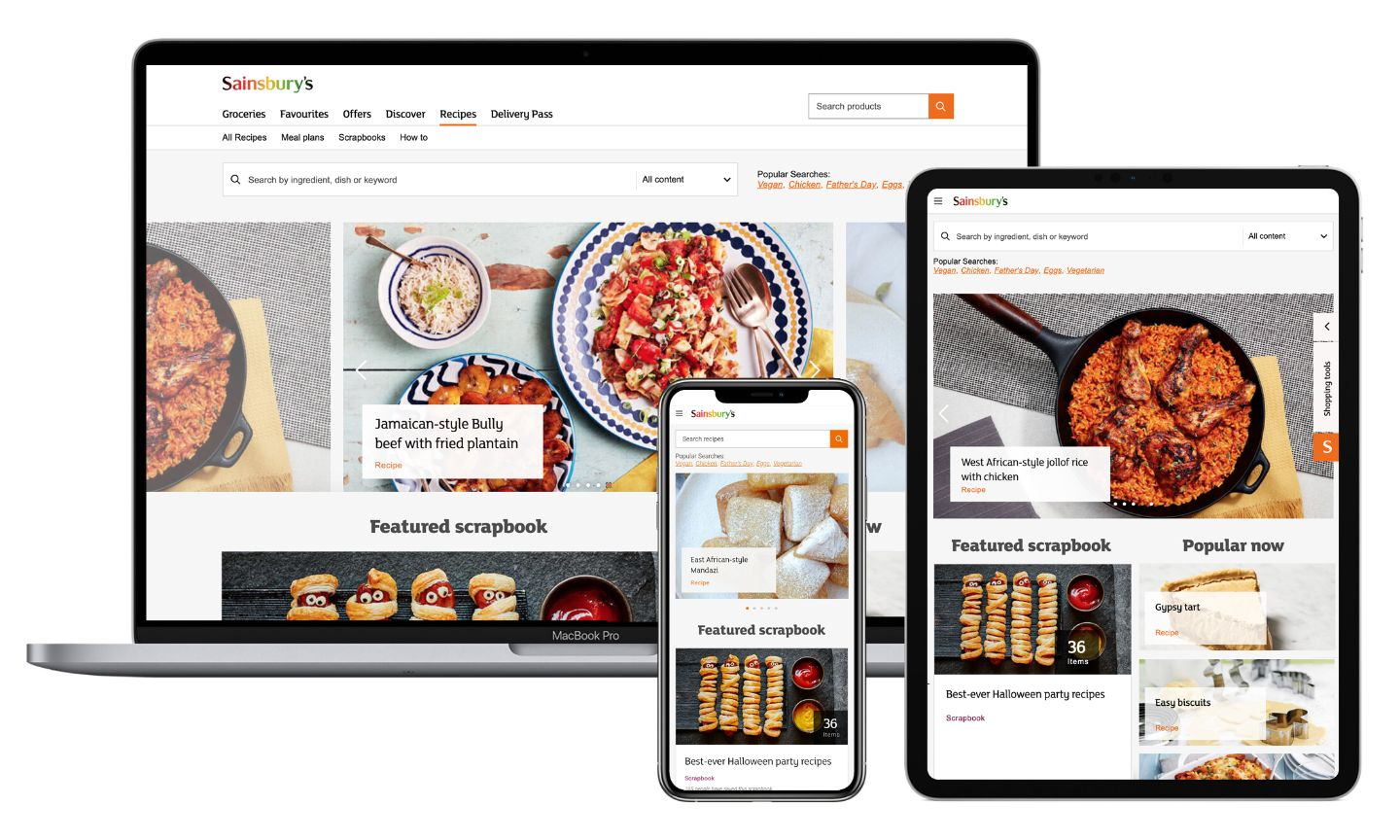
Our customer, Sainsbury’s—alongside their other brands (TU, Argos, and Habitat), focuses on “content experiences” at the heart of their digital experience platform. Full case study.
Content is marketing
Our customer, Sainsbury's, for example, has made a name for themselves for online groceries. I just visited their London HQ in January 2023 for a full-day workshop. They’re focused on what they call “content experiences”. The point is that they, as a large enterprise in retail, focus on attractive content-rich experiences that go way beyond simple product presentations.
We believe in content tools for the modern marketer. It's not about flashiness or bells and whistles—it's about communicating your message in the most effective way possible.
3—Enterprises debunk the myth of all-or-nothing headless approach
And finally, we believe that enterprise is never all-or-nothing. The idea that you have to choose between a fully headless approach or a monolithic suite is a false dichotomy. Magnolia can run in full headless mode or hybrid headless. Here’s the lowdown if you’re interested. The point is that enterprises are not in the business of being more or less MACH-compliant. They’re in the business of achieving their business goals. Oftentimes, that calls for a level of flexibility that headless-only vendors just don’t support. Our partner, Priocept, also wrote an interesting article about things to consider when implementing a headless CMS like Magnolia.
A lot of the messaging from so-called pure-play headless vendors assumes greenfield deployments. A strict adherence to an all-headless-all-the-time strategy.
The reality for most enterprises is that they can't or won't do that for very valid business reasons. There's always some messy middle that needs to support legacy tools or data sources, some tools that need to be on-prem instead of on public cloud, or an environment where multiple CMS need to cohabitate.
Because most of our customers are what you would typically call “an enterprise”—which means complexities have to be resolved left and right, we’ve put together a collection of what that all means in relation to proper use of Magnolia:
"Magnolia Announces Groundbreaking Composable DXP, But You'll Have to Wait to See How Groundbreaking It Really Is"
We can't wait for you to read the full report and see all the data and insights collected by Gartner. Any Magic Quadrant is a huge piece of research. Many months go into creating them and the more I’ve worked on them as a participating vendor in both the 201x WCM MQ, 2021 DXP MQ, 2022 DXP MQ, and fingers-crossed, also the 2023 DXP MQ, the more I’ve come to respect how well-researched it is and how much more beyond a simple product evaluation they are.
In the meantime, perhaps take a look at NCS’s explanation of why they use Magnolia, leading the charge in the composable DXP space:
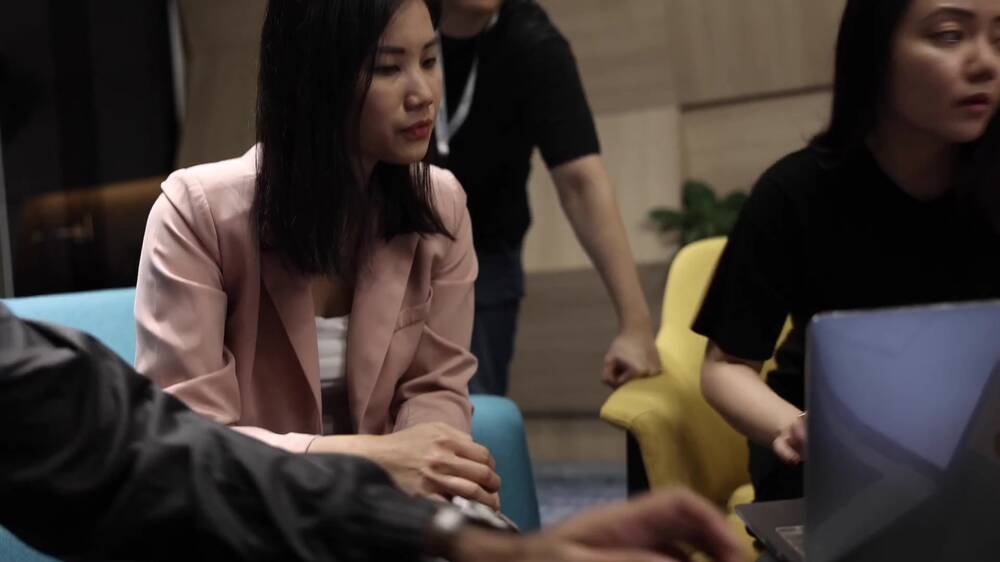
Gartner, Magic Quadrant for Digital Experience Platforms, Published 23 February 2022, Analyst(s): Irina Guseva | Mike Lowndes | Jim Murphy | Gene Phifer
Gartner does not endorse any vendor, product or service depicted in its research publications, and does not advise technology users to select only those vendors with the highest ratings or other designation. Gartner research publications consist of the opinions of Gartner’s research organization and should not be construed as statements of fact. Gartner disclaims all warranties, expressed or implied, with respect to this research, including any warranties of merchantability or fitness for a particular purpose.
This graphic was published by Gartner, Inc. as part of a larger research document and should be evaluated in the context of the entire document. The Gartner document is available upon request from Magnolia.
Gartner and Magic Quadrant are registered trademarks of Gartner, Inc. and/or its affiliates in the U.S. and internationally and are used herein with permission. All rights reserved.

.2024-10-21-13-28-53.jpg)
